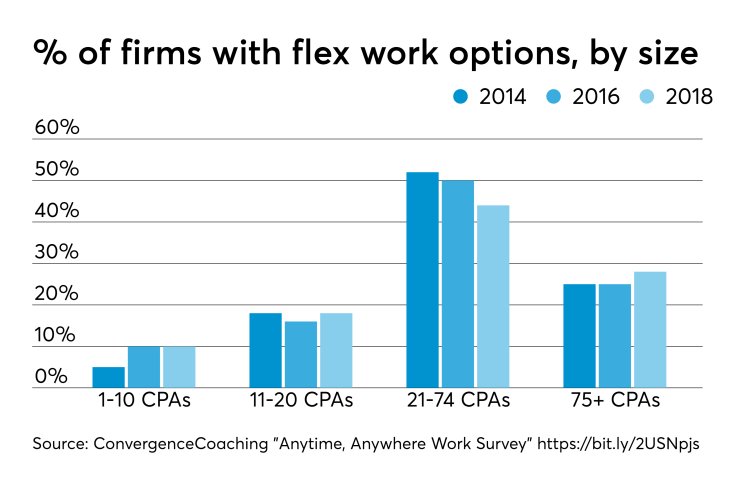As professionals rely more and more on a business landscape shaped by technology, remote work and the virtual office are concepts that will only continue to grow, according to Jim Boomer.
In his session on the realities of flexible work practices at the 2019 AIPCA Engage conference in Las Vegas, the CEO of Boomer Consulting stressed that with today's technology capabilities, office space is becoming obsolete in many ways. Boomer said that companies can spend anywhere from $400 to $1,200 per person per month for office space, without even factoring in other factors such as commuting, utilities and internet access.
“You can save some serious dollars by removing your footprint there," he said. "It’s taken awhile, but I think people are starting to realize they’ve over-invested in the amount of office space they need.”
Boomer outlined the benefits of remote work, which includes factors such as flexible schedules; a greater ability to focus; geographical freedom (a tool for recruiting and retention); staff members spending more time with family; and reduced or no commuting costs to expense.
Boomer also listed the challenges that need to be anticipated with a virtual office, including the ability (or inability) to "turn work off;" isolation and lack of communication with the team; difficulties around establishing effective collaboration; distractions at home; remote workers staying motivated; and time zone challenges.

Managers especially, Boomer said, have to be focused on making sure remote staff members are contributing to the team. “It becomes pretty apparent if work is not getting done," he said. "If you’re starting [a virtual office] from scratch, you really have to focus on building a culture. Managers have to manage.”
Boomer further broke down the three kinds or remote work: Flex scheduling (where it doesn’t matter when an employee works, as long as work gets done); telecommuting (where an employee works from a remote location while remaining in contact with their office); and fully remote workers (a permanent telecommuter, who seldom comes to the office, if at all). These remote options, Boomer said, have great appeal for young professionals, and firms need to anticipate some or all of these types of practices moving forward.
“There’s a greater and greater expectation for flexible work by people entering the profession," he said. "It’s going to take time to convince … traditional people in firms. … It’s not about age; there’s an inherent desire on how [traditionalists] like to work from day to day."
Above all, Boomer said that remote work practices require trust, which sometimes requires a certain amount of maturity. “We have found we are most successful with people when we have two to five years to hire them into the virtual environment," he said. "We want them to be invested in the organization and own their responsibilities."
This trust, Boomer said, is up to managers, who have to constantly define their expectations for remote staff members. “In a remote work environment, you need to clearly give expectations and have workers report back to you," he said. This requires establishing goals and communicating constantly. To avoid an "out of sight, out of mind mentality," he suggested using videoconferencing to set up one-on-one meetings with fellow professionals regularly.
Boomer asked attendees to consider if their firms can anticipate a remote work environment, as the demand has already arrived. "Work is what you do, not where you go," he added. “Our world is not changing; it has already changed."





